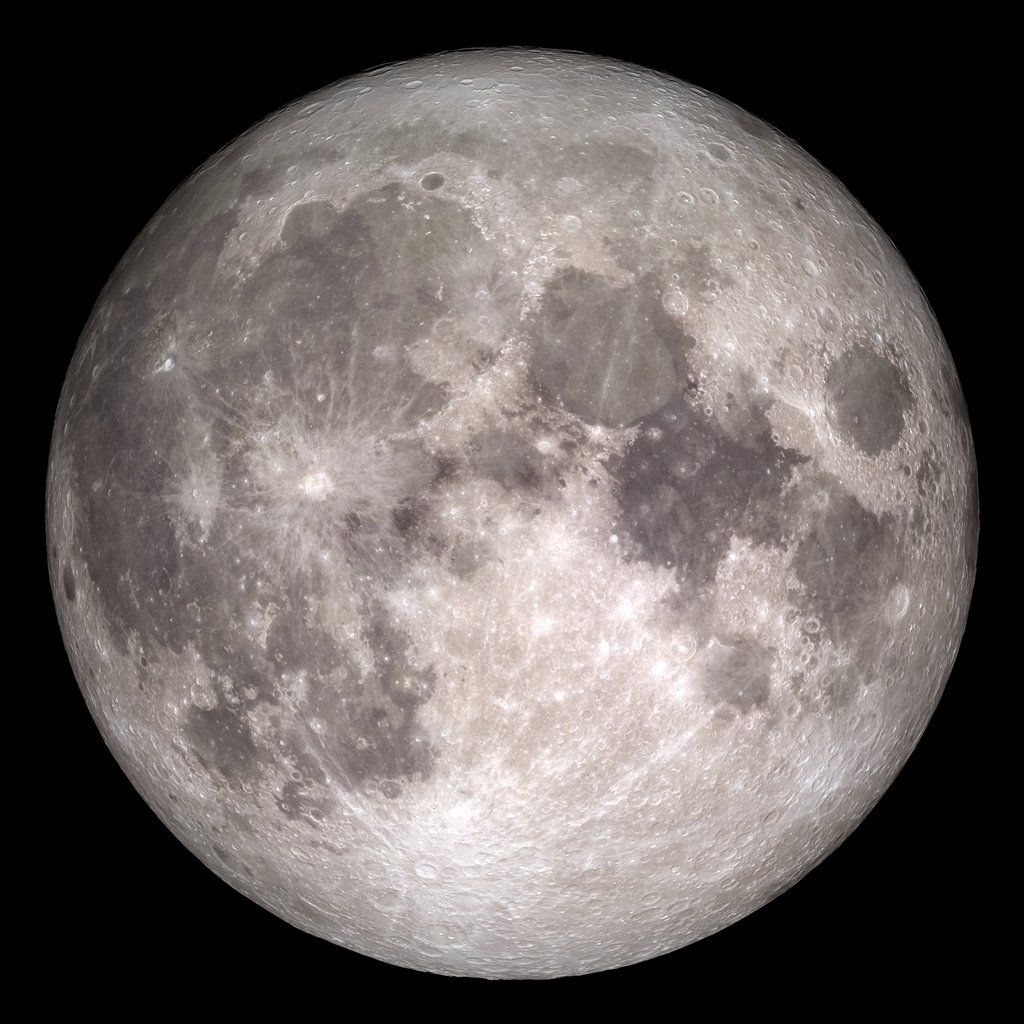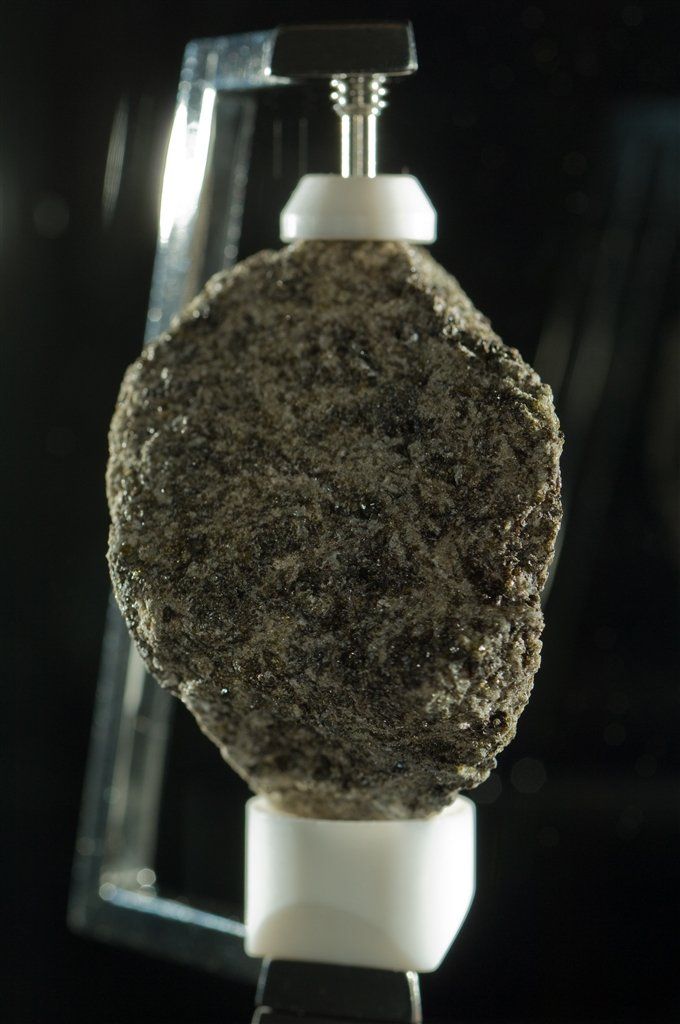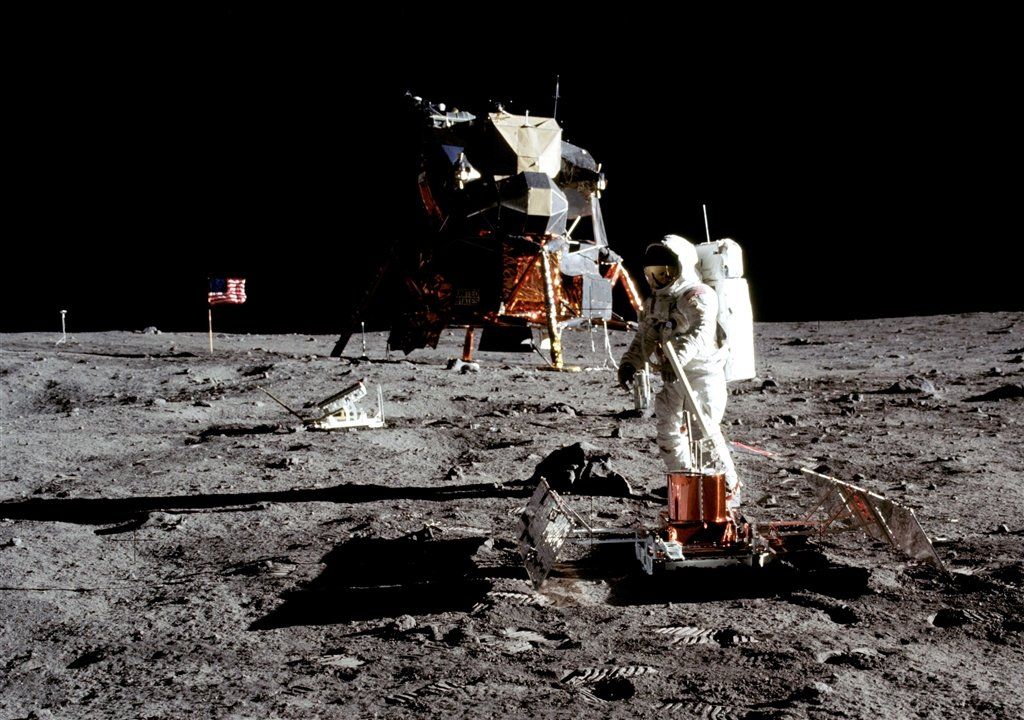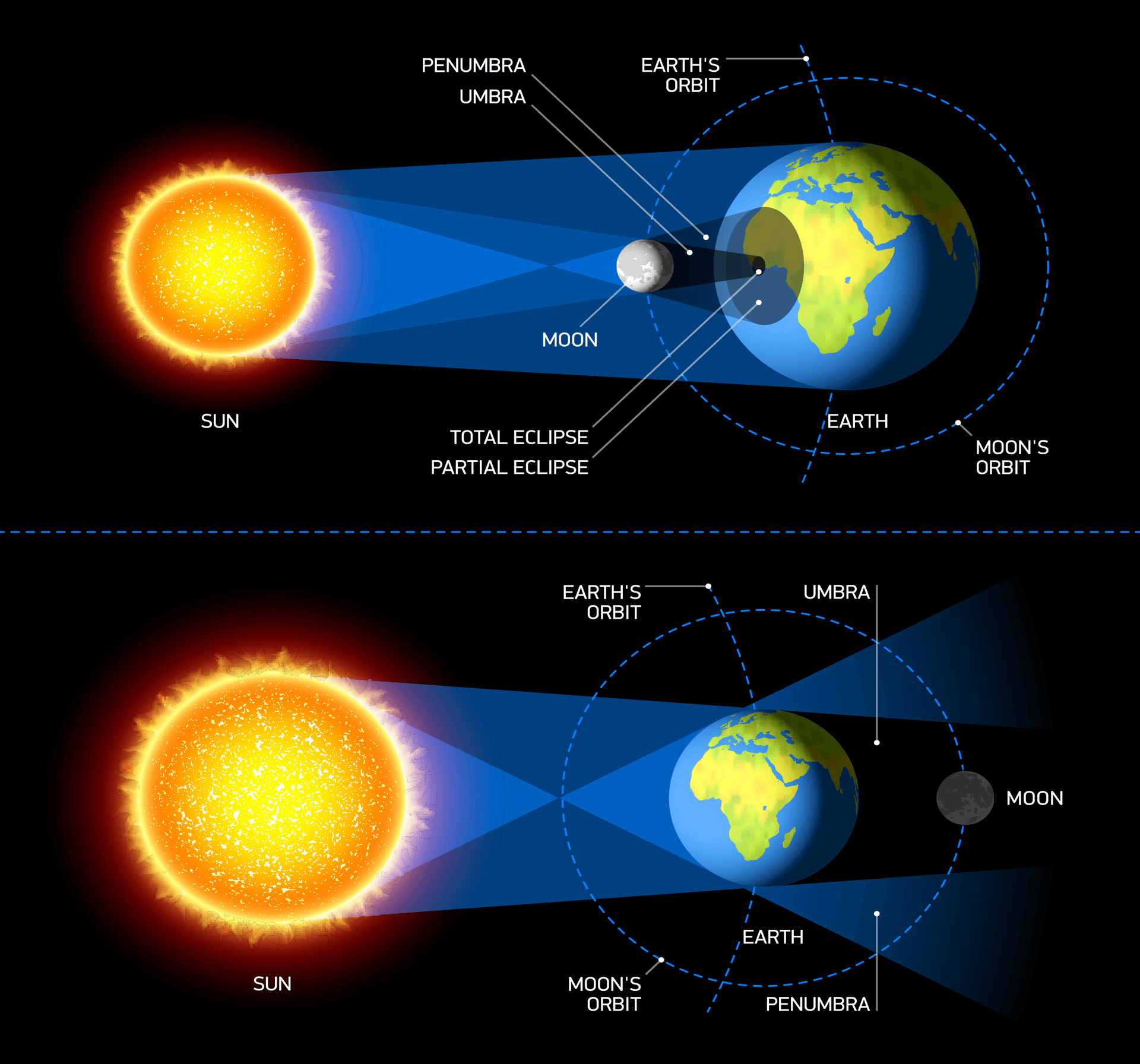This web page is created within BALTICS project funded from the European Union’s Horizon2020 Research and Innovation Programme under grant agreement No.692257.
The Moon
The Moon is certainly one of the best known and most studied celestial bodies by humans. It is the only permanent natural satellite on Earth orbiting our planet in an elliptical orbit, with the nearest point (apogee) at about 363,000 km and the farthest (perigee) at 405,000 km. Today, the Moon is also the only celestial body outside the Earth that man has visited.
Most scientists believe that the Moon formed shortly after the “birth” of the Earth, when an object the size of Mars hit the planet. Over time, debris scattered into Earth’s orbit formed the Moon. As a result of this collision, most of the heavy elements, mainly iron, came to Earth, so the lunar iron core is small. This theory also explains the different densities of the Earth and the Moon – the Earth is denser than the Moon.
Less popular are theories that the Moon simply flew past the Earth and its gravity caught the object, or that the Moon formed at the same time as the Earth, or that the Earth originally revolved around its axis so fast that a piece detached from it, who has become the Moon.
As the Moon has practically no atmosphere, it is characterized by sharp temperature fluctuations between the sunlit and dark sides. During the day the temperature can exceed 100oC, but on the night side it can drop to -180oC. In some craters located in the polar regions, the sunlight never shines and the temperature there never rises above -170 degrees Celsium. There is water ice.
The Moon, with a diameter of about 3,500 km, is in synchronous rotation relative to Earth, which means that practically the same side faces the Earth. The Moon orbits its axis in 27.3 days, but the same phase of the Moon on Earth can be observed every 29.5 days. It should be noted that it is wrong to call the “invisible” side of the Moon the “dark” side, because it receives as much sunlight as the side facing the Earth.
Looking at the Moon over a longer period of time, it is possible to notice that it is “wobbling” in its orbit around the Earth. Thanks to this effect, called libration, a total of about 59% of the lunar surface can be observed.
The gravitational force of the Moon acts on the Earth, creating tides. The force of the high tide changes the distribution of water in the oceans, creating two tidal bulges and two low tides. The tidal bulges are on the side of the Earth facing the Moon and on the opposite side of the planet. However, tides are observed perpendicular to the tidal bulges. The Moon affects not only the oceans and seas, but also the Earth’s crust, lifting it slightly to the closer side of the Moon. Thus, the Moon slows down the Earth. Our planet rotates more slowly around its axis. As the Earth and the Moon are a unified system, the changes affect the two celestial bodies involved – the Moon moves away from the Earth by about 4 cm per year. This interaction perfectly demonstrates the law of impulse conservation.
Because the Moon is so close to the Earth, it looks very bright. It reflects about 7 to 12% of the sunlight or, more simply, reflects the moonlight only slightly better than an old asphalt road surface.
The darkest formations on the side of the Moon facing the Earth are called the seas. In ancient times it was believed that they are dark because there is water. Today, it has been studied that they are huge lava fields. The brightest areas are called the highlands. There are many craters in both the seas and the highlands, which are well preserved because there are no atmospheric, weather and geological processes on the Moon. There are more than 300,000 craters with a diameter of more than 1 km on the side facing the Earth.
Sometimes large objects strike the surface of the Moon, which not only leaves craters of impressive size, but also throws rocks into space. More than 120 lunar meteorites have been found on Earth. However, this is not the only way the rocks of the Moon have reached Earth. Approximately 380 kg was delivered to Earth during the Apollo missions and 327 g was brought under the USSR Luna program.
At different orbiting points, the position of the sunlit areas relative to the Earth changes. This allows the observer to see the phases of the Moon on Earth. When the Moon is between the Earth and the Sun, the other side of the Moon is illuminated. This phase is called New Moon. When the Moon is on the other side of the Earth, the Sun fully illuminates the side facing the Earth. We know this moment as Full Moon. The period of time from New Moon to Full Moon is called the Waxing Moon, but from Full Moon to New Moon it is called the Waning Moon. About halfway between New Moon and Full Moon, the illuminated part of the Moon looks like a semicircle with the curved part pointing to the right. This is the First Quarter. About a week after Full Moon, the Moon is seen as a semicircle, the curved part pointing to the left. This phase is called the Last Quarter.
When the Moon, Earth and Sun are on a straight line, eclipses are observed. The solar eclipse is visible in the phase of the New Moon, and in the Full Moon phase – the eclipse of the Moon.
Because the apparent dimensions of the Moon and Sun disks are similar when viewed from Earth, the Moon’s disk is able to cover the entire Sun disk. This is called total solar eclipse. Sometimes the Moon is further in its orbit around the Earth and then its size is smaller than the Sun’s disk. In this case, the Moon is unable to cover the entire Sun’s disk and a ring-shaped solar eclipse forms. Given that the Moon is moving away from the Earth at a speed of about 4 cm per year, as well as the fact that the Sun is slowly “expanding” and getting bigger, after many hundreds of millions of years there will be a moment when only ring-like eclipses will be observed on Earth. On the other hand, if we could go back hundreds of millions of years, we would only have to deal with total solar eclipses.
On the other hand, in the Full Moon phase, if the Earth, the Moon and the Sun are on a straight line, the Earth covers the Sun and its light does not fall directly on the surface of the Moon. The Sun’s rays are directed through the Earth’s atmosphere, where, thanks to Rayleigh scattering, the blue light is scattered more. Therefore, during a total lunar eclipse, its surface color varies from juicy orange to dark reddish brown. Penumbral and full eclipses are possible. In the case of a penumbral eclipse, the darkening of the Moon disk is difficult to see. In case only part of the Moon passes through the Earth’s shadow, there is a Partial lunar eclipse. If the Earth’s shadow overlaps the entire lunar disk, it is called total lunar eclipse.
Unlike the solar eclipse, which is observed in a relatively small area on Earth, the lunar eclipse is visible from anywhere where night has occurred and the Moon is visible. The maximum phase of a solar eclipse lasts only a few minutes, but a lunar eclipse can be observed for several hours. The solar eclipse cannot be observed without special filters, but the lunar eclipse can be safely observed with the naked eye.






















